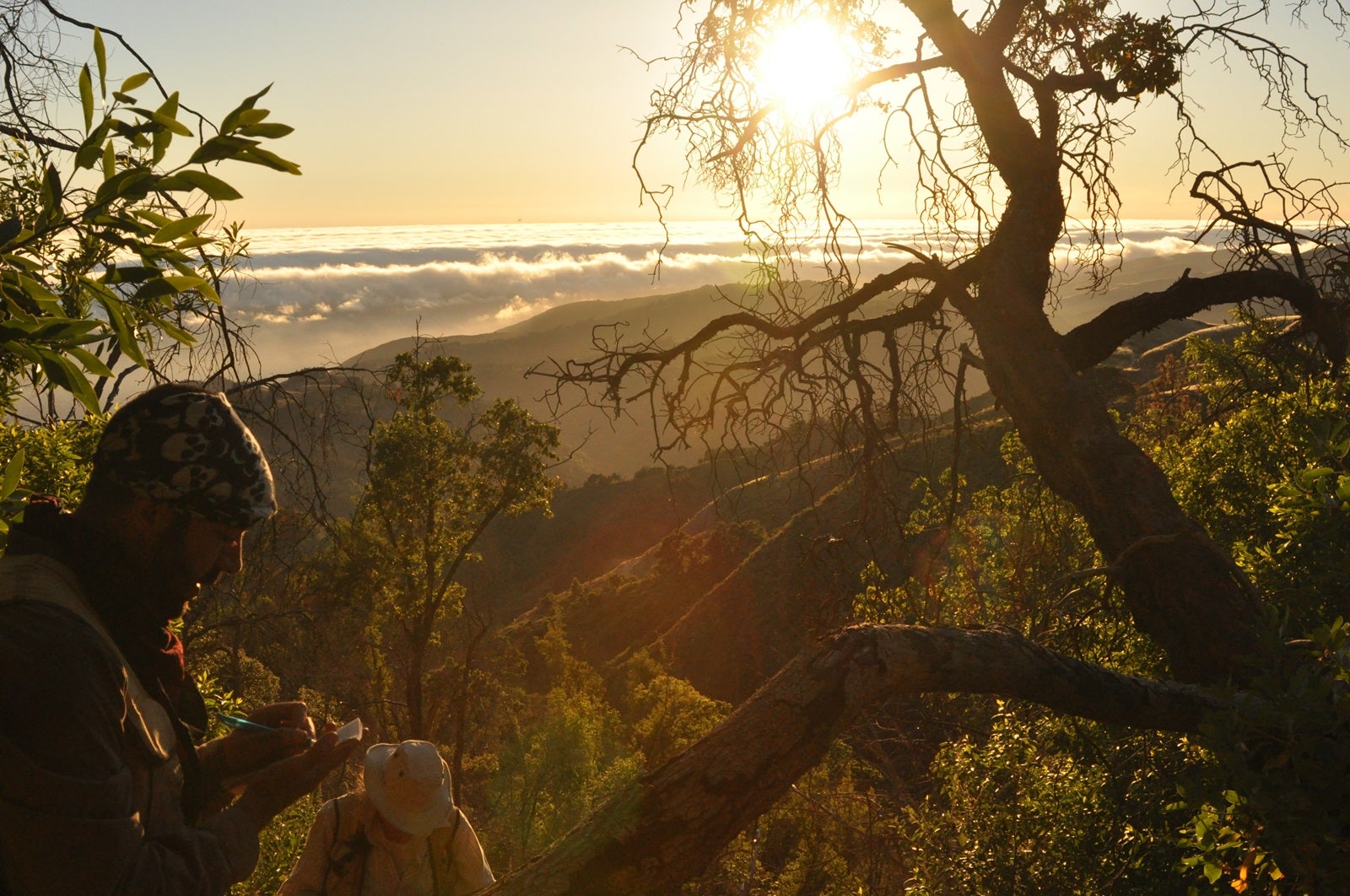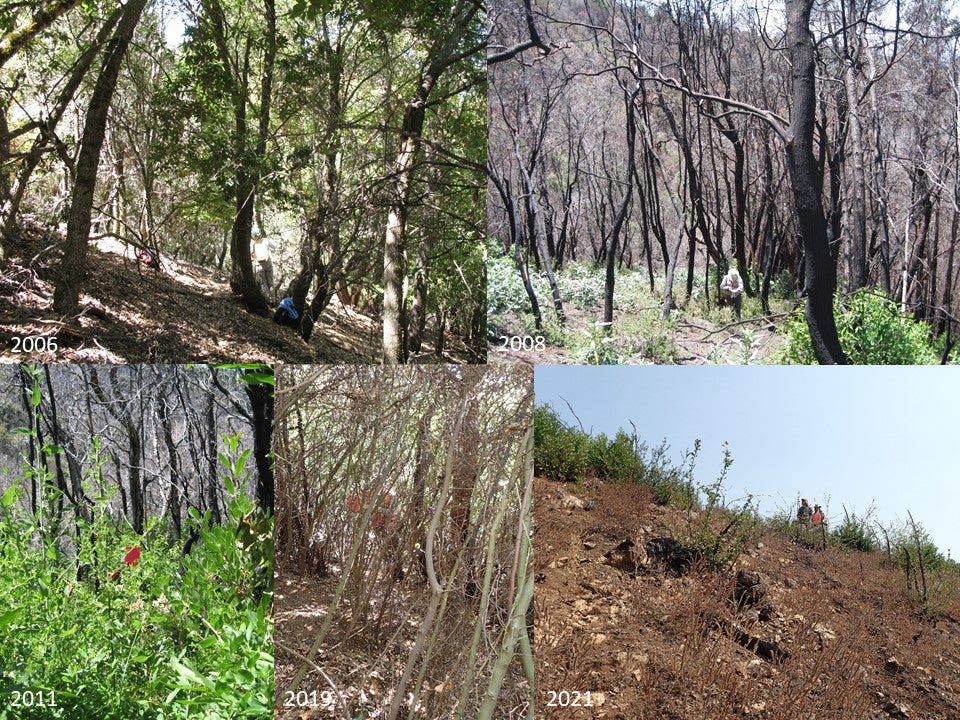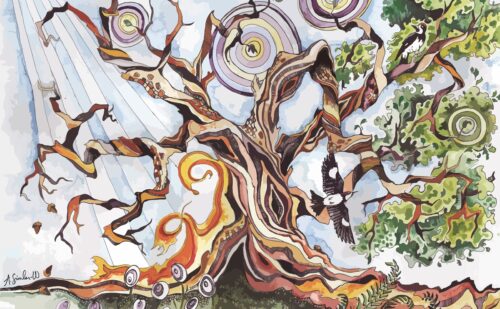
Allison Simler-Williamson, assistant professor in the Department of Biological Sciences, has won a $1.3 million grant from the National Science Foundation. Her lab will study the changing forest ecosystems in the American West, as the region faces wildfires and a novel pathogen affecting plant life.
Boise State will receive $365,000 of the NSF funding. The remainder will go to an interdisciplinary team of researchers led by Simler-Williamson from the University of Georgia, North Carolina State University, Lewis-Clark State College and California Polytechnic State University.
This project will provide insight for disease and wildfire management in forests. It will also fund field research experiences and networking opportunities across six collaborating institutions for Boise State students.
Arboreal illness in Big Sur
Trees, like humans, can get sick. And just as pandemics can change human societies, new plant diseases can dramatically upset forest ecosystems.
Sudden oak death is one such disease. It’s caused by the pathogen Phytophthora ramorum, which was introduced to central California in the 1990s. Oak and tanoak trees, a dominant component of these coastal forests, have limited natural defense mechanisms against this foreign pathogen, leading it to kill nearly 43 million trees along the western coast of the United States.
Sudden oak death and escalating wildfires throughout the region have disrupted ecosystems throughout California’s coastal redwood and mixed evergreen forests, causing many areas to appear to shift from forest to shrubland. This new grant, led by Simler-Williamson’s lab, will explore how tree-shrub competition is changing due to this disease, whether these vegetation shifts are permanent, and implications these shifts have for other environmental processes, such as future wildfires and carbon sequestration.
Forest managers, tribal communities and policymakers can use the information from this project to direct disease and wildfire management efforts in the future.

Studying forest diseases is especially difficult because of trees’ long lifespans, and despite its name, sudden oak death can take several years to kill its hosts.
Simler-Williamson and her team will leverage a combination of new experiments and a long-term dataset spanning two decades to study these long-lived forests. The data collection began in 2006 and Simler-Williamson has been using it since the early 2010s.
Hands-on learning opportunities
This NSF grant will fund up to two graduate and six undergraduate research assistants from Boise State to add to this long-term work.
“I learned so much from working with this long-term data. I’m excited to share that experience with new students,” Simler-Williamson said, as she described the value and scope of the field and laboratory opportunities.
Students will travel to Big Sur to collect data about P. ramorum’s impacts on forest mortality, nutrient cycling and fire behavior, while conducting experiments that explore how competition between shrubs and trees may shift because of these disease-related changes. The team will also use laboratory work to study the pathology of P. ramorum and its impacts on soil resources and build population models to predict long-term changes.
Students will also network with an interdisciplinary group of research assistants and faculty members from R1, R2 and primarily-undergraduate institutions. This opportunity will benefit Boise State students considering graduate school or careers in the biological sciences.

Art-Science Integration
In addition to its research efforts, the project includes funding for Boise State’s “Art-Science Integration” VIP class, co-led by Stephanie Galla, Megan Cattau, Sarah Dalrymple and Simler-Williamson, where students use artistic approaches to explore STEM themes. Students taking the class will develop visual arts media to creatively interpret research results from the project. They’ll display their work in a culminating exhibition for the general public.
This art-science collaboration is yet another benefit of this impactful project steeped in interdisciplinary work across time, space and subject matter.